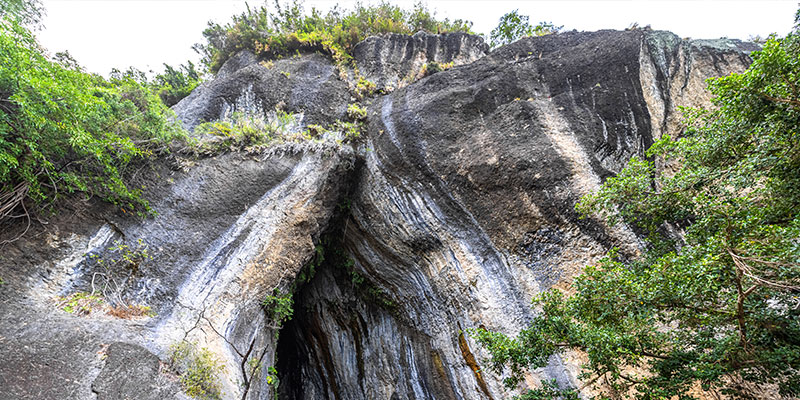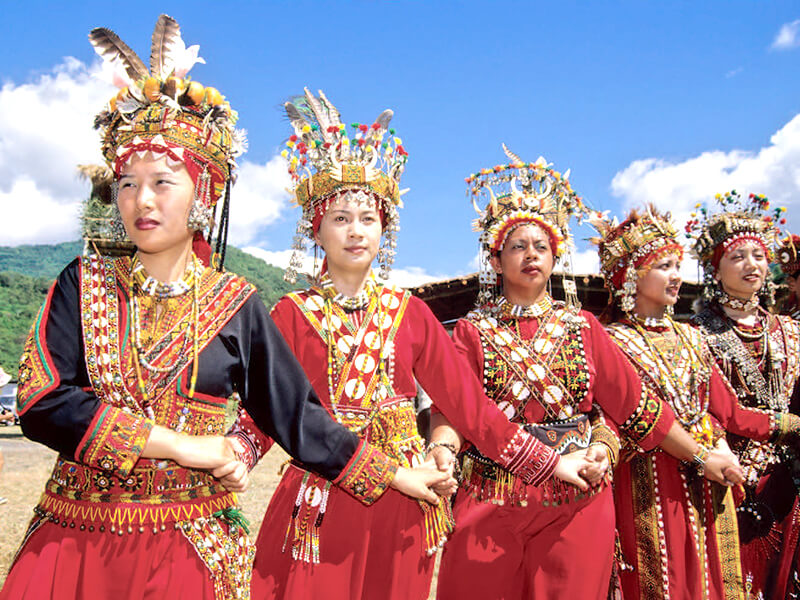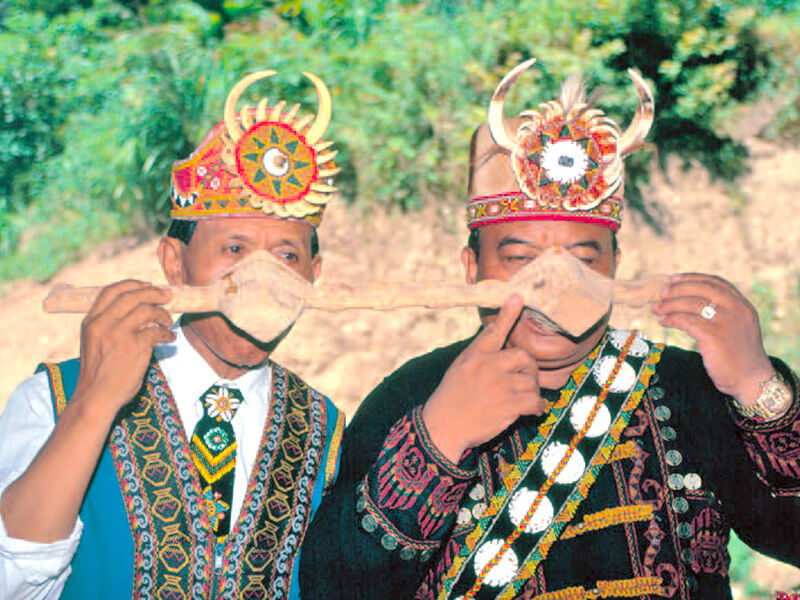Culture
Culture
Taitung's ethnic diversity has turned this honest and uncomplicated place into a colorful cultural tapestry; remnants of prehistoric culture from the distant past unveil a mysterious civilization of long ago. Slow down your steps, experience aboriginal culture and learn about prehistoric sites, discovering that Taitung is a rewarding place for in depth cultural tourism.
![Changpin Culture]()
Changpin Culture
Changpin culture can be traced back to five to six thousand years ago. It inherited the culture and traditions of the Old Stone Age. Fishing, hunting and collection are the major economical ctivities.Changpin culture is the only heritage of Old Stone Age found in Taiwan.Pahsien caves, located in Changyuan village, is composed of about ten sea-eroded caves. These caves are big enough for people to stay in. In pre-historical period, people live in these cases as their residence.
![Chihlin Culture]()
Chihlin Culture
Chihlin culture can be traced back to about 3,500 years ago. Since many huge stones were found, Chihlin culture is also called Huge Stone Culture. Among the heritage, the most representative heritage of Chihlin tribe found in Chenggong town is classified as national 1st-class monument.
![Peinan Culture]()
Peinan Culture
Peinan culture is the most completed and rare cultural heritage around the Pacific area. It can be traced back to 2,000 to 3,000 years ago. Stone coffin is the specificity of Peinan culture. The location is now the National Museum of Prehistory and Peinan Culture Park.
Indigenous Group
Obstructed from the outside by mountains and oceans, Taitung is an isolated Garden of Eden. The earlier settlers, such as the Ami tribe, the Bunun tribe, the Rukai tribe, the Paiwan tribe, the Yami tribe, etc., and the immigrants at later period have contributed to the diverse humanity of current Taitung.
![Amis]()
Amis
Amis is the largest indigenous tribe in Taiwan. In Taitung, most Amis people live in Donghe Chihshang, Guanshan, Luye, Changbin, Chenggong, Beinan and Taitung City. Amis has a matriarchal society system. Adoption of son-in-laws in marriages is encouraged. Females are in charge of households. Amis males live under a tier system divided by age: every 2 to 5 years as a tier. Males in the same age-tier study and live together and the respect for seniority is common in Amis society. The Harvest Festival is one of the largest ceremonies in Amis society, much equivalent to the lunar New Year. Amis people are renowned for singing, dancing and optimistic personality. Their weaving and embroidery works are equally reputable.
![Puyuma]()
Pinuyumayan
Mainly concerntrated on the southern plain of Taitung Rift Valley, Pinuyumayan is traditionally a matriarchal society but has gradually transformed into a paternity society. Pinuyumayan tribe possesses excellent embroidery skills. The dancing human figure pattern is the unique totem of Pinuyumayan. They will hold annual rituals including Basibas (monkey ceremony) and Mangayaw (hunting festival) by the end of each year to unite the tribe. Pinuyumayan has a Palakuwan, an assembly which functions as the ground to hold adulthood rituals and warrior training. Pinuyumayan is brave and skillful in fighting. During Kangxi Period of Qing Dynasty (1662-1722AD), Pinuyumayan helped to suppress the rebellion Yi-kwei Zhu and his froops, and was entitled Pinuyumayan King by Qing Dynasty.
![Bunun]()
Bunun
Bunun has the most traditional ceremonies among all indigenous tribes in Taiwan,including mapilau/bapilauan(millet reclaiming ceremony), inpinangan / minpinangan (millet sowing ceremony), minsalala (harvest ceremony) and manaqtaing’az / malahotaing’ia(earshooting ceremony), Bunun people truly value millet and ceremonies. Because of the complicated nature of ceremonies, Bunun developed the signature called Bunun pasibutbut (eight-part harmonic singing) to please gods and beg for harvest in return. This self-invented multipart harmonic singing of Harvest Festival was first made famous around the world by Bununs from Wulu Village.
![Yami/Tao]()
Yami/Tao
Also known as Tao, Yami live on Lanyu (Orchid Island), an island in the southeastern offshore of Taitung. Living between mountains and ocean Yami/Tao people mostly live by fishing and some by farming. They live with mutual help and believe in sharing and giving. They are contented with everything given.The ocean-loving tribe also developed a unique ocean culture due to its special eco-environment. They have their own solar and lunar calendar system. The semi-basement house, tatala (canoe) and Flying Fish Festival are the signature of its culture.
![Rukai]()
Rukai
Rukai tribe, mostly reside at the south of Central Mountain Range. In the past, their social class system consisted of chieftain, nobles, the learned and civilians. Marriage is one way to change the social status. The whole tribe is ruled by the chieftain. In Rukai society, the wild lily is a holy flower that symbolizes purify. Only male skilled in hunting and female of chastity are qualified to wear wild lilies, under the chieftain's authorization. Rukai people prohibit hunting of Formosan clouded leopard and mountain hawkeagles, and regard hundred-pace viper as the ancestor of their chieftain
![Paiwan]()
Paiwan
By population, Paiwan is the third largest indigenous tribes at Taiwan, who mainly reside in Laiyi Township, Pingtung County. Taitung's Paiwan population is mostly concerned in Jinfong, Taimali, Dajen and Dawu Townships. Paiwan is famous for the totem of hundred pace viper, peerage system, sculptural arts, slide stone house and Maljeveq (Five-Year Ceremony). There are three treasures of Paiwan: bronze dagger, earthen jar and lazurite beads. It is said that bronze dagger symbolizes a man's authority, earthen jar symbolizes the nobles’ power and lazurite beads symbolizes the possession of fortune. The three items are the essential betrothal gifts for the noble class.
![Kavalan]()
Kavalan
Kavalan is the last Pingpu tribe to accept the Han culture. Initially residing at Lanyan Plain, they moved to Yilan, Lotung and Suao because the Hans migrated southwardly. Eventually they settled down at Beipu and Fongbin, Hualien County and Changbin, Taitung County. In the past, Kavalan was forced to be attached under Amis. After a decade's efforts, Kavalan reclaimed their original tribe name. Kavalan people have strong ethnic awareness and preserve their mother language and culture in their daily life such as slow-chanting, black-and-white costume and ceremonies conducted by females.











